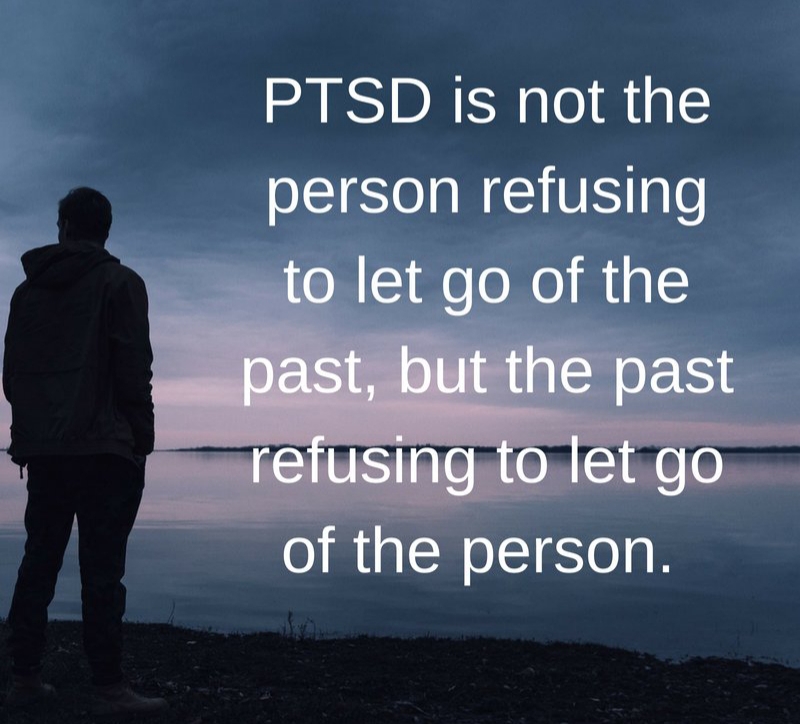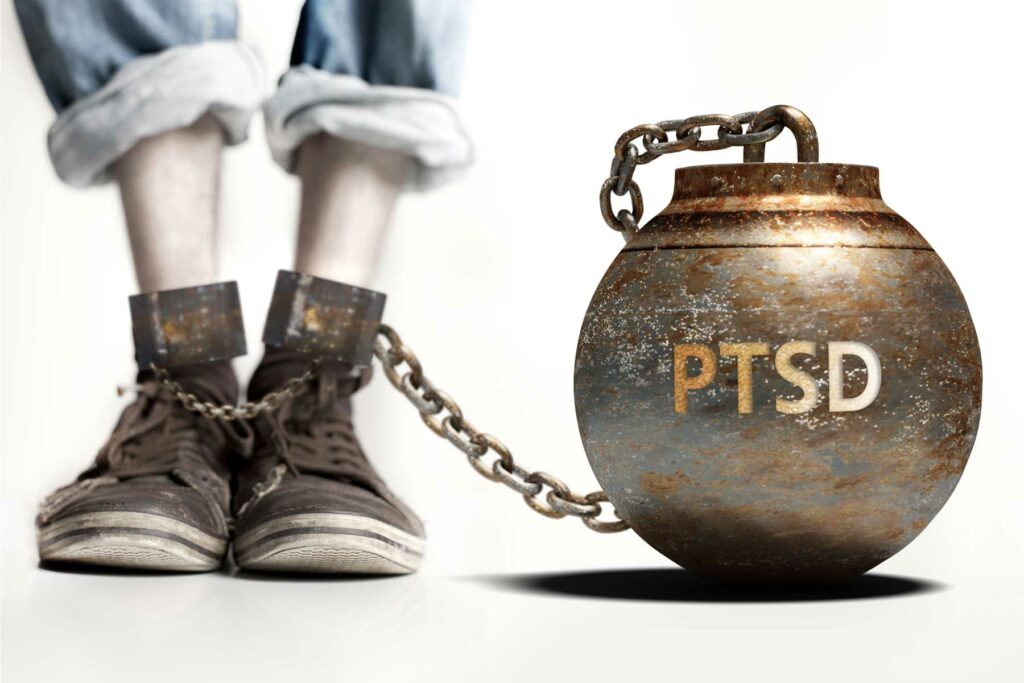This website requires you to be 21 years or older to enter. Please confirm your age below to continue.

According to the DSM-5 (a diagnostic manual for mental health conditions), post-traumatic stress disorder or PTSD is defined as; a debilitating stressor induced mental illness resulting from changes in the brain that developed from exposure to a life-threatening or traumatic event. Changes in the brain cause an inability to inhibit fear.
The U.S. Department of Veterans Affairs National Center for PTSD report, about 6 in every 10 men and 5 in every 10 women experience at least one traumatic event in their lifetime.
Causes of PTSD include:
Each year, around 8 million adults will be diagnosed with the disorder. It’s more frequent among people with high-stress jobs or people who are more likely to be exposed to traumatic events like military service members and first responders. However, one of the most common causes of PTSD is experiencing a car accident.
People who suffer from PTSD may have nightmares, flashbacks of the event, intense mood swings, aggression, anxiety or fear about specific activities, emotional numbing, depression, suicidal thoughts, and avoidance of thoughts, feelings, or places reminiscent of the trauma. They may also show physical symptoms like headaches, stomach pain or cramping, appetite changes, muscle aches, back pain, and more.
What causes PTSD?
Researchers don’t know why some people get PTSD and others don’t. Genetics, neurobiology, risk factors, and personal factors may affect whether you get PTSD after a traumatic event.
One thing researchers did find is that patients with PTSD have more cannabinoid receptors and fewer endocannabinoids in plasma than people without the disorder.
Why is this important?
To understand why we must take a more in-depth look at our Endocannabinoid system. The endocannabinoid system helps the regulation of mood, anxiety, and elimination of fear learning. The endocannabinoid system uses cannabinoids to help balance and control emotions.
A potential cause of PTSD is the condition stems from a problem with one of our bodies’ own internal endocannabinoids called Anandamide, which will be discussed later in this article. External cannabinoids, in this case from cannabis, can help stimulate the same receptors as Anandamide, resulting in decreased fear and anxiety, enhancing mood, and relief from hyper-stimulation and intrusive memories.
Research on overwriting memories
Researchers at Wayne State University in Detroit, MI, looked at how cannabis use impacts the amygdala response of those dealing with trauma-related anxiety like PTSD. Researchers studied the amygdala responses in three groups of participants —

1) healthy controls who had not been exposed to trauma, 2) trauma-exposed adults without PTSD, and 3) trauma-exposed adults with PTSD. Using a randomized, double-blind procedure, the 71 participants were either given a low dose of THC or a placebo.
Results showing measurable signs of reduced fear and anxiety were found in all three groups, which suggests that even those with PTSD were able to experience less fear with THC in their system.
The authors conclude that the research suggests that “THC modulates threat-related processing in trauma-exposed individuals with PTSD.” The authors add that cannabis “may prove advantageous as a pharmacological approach to treating stress- and trauma-related psychopathology.”
A second study from Brazil’s Federal University of Paraná focused on how cannabis could help those with PTSD by extinction of the memories of their trauma. It was first suggested by R. Andrew Sewell, professor at Yale, that cannabis may be able to help PTSD patients “overwrite” traumatic memories with new memories in a process called ‘extinction learning’.
For most of those who experience traumatic incidents, fear subsides after six months or so due to this process. New memories become associated with the action and override the old. But for those with PTSD, extinction learning doesn’t happen. The trauma attached to the old memories continues to cause problems. Interestingly, those with PTSD show impaired function of the endocannabinoid system, which may be why they are unable to go through the normal extinction learning process.
Sewell believed that cannabis could help. Cannabis stimulates CB1 – a receptor in the endocannabinoid system that has improved extinction learning in animal studies.
They found that cannabis could help. Low doses of the cannabinoid THC or THC combined with CBD, another cannabinoid, were both able to enhance the extinction rate for challenging memories and reduce overall anxiety responses. Their study shows that THC drives the rate of extinction learning, while CBD can help alleviate potential side effects from higher doses of THC.
The authors concluded that the current evidence from both healthy subjects and PTSD patients suggests that these forms of cannabis “suppress anxiety and aversive memory expression without producing significant adverse effects.”
What are the treatments for post-traumatic stress disorder (PTSD)?
Treatment for PTSD usually involves psychotherapies, medicines, or both. PTSD affects people differently, so a treatment that works for one person may not work for another. If you have PTSD, you need to work with a mental health professional to find the best treatment for your symptoms.

Those suffering PTSD symptoms often feel their only option is a life relegated to pharmaceutical drugs and therapy. Medications have their place and can be life-saving — but are often ineffective.
Opioids are also prescribed to patients with PTSD however, they’re highly addictive medications, and patients with PTSD may be at a higher risk of developing opioid use disorder compared to patients without PTSD.
Thankfully, cannabis offers a safer treatment option for people with PTSD without the side effects.
So, can cannabis help treat PTSD?
Yes, in many cases. From observational studies and anecdotal evidence, we know that cannabis, both CBD and THC, may help patients improve PTSD symptoms.
CBD can help with some of the symptoms of PTSD. CBD, without THC, can help by reducing anxiety, disrupt fear memories and help REM sleep. CBD works by interacting indirectly with the CB2, dopamine, and serotonin receptors.
CBD doesn’t actually increase serotonin or dopamine. It is a regulator that helps your body use chemicals that are there more efficiently or break chemicals down more slowly. Through interaction with certain brain pleasure centers, in particular, the area that stimulates anandamide, scientists believe that CBD helps with serotonin and dopamine production and regulation.
Some research suggests that taking CBD immediately after a traumatic event might make it more difficult for the brain to form the memories that may later develop and cause PTSD symptoms.
THC can help treat symptoms of PTSD. Anandamide is an endocannabinoid made in our body that helps send signals throughout the brain and body. Anandamide affects areas of the brain that influence concentration, coordination, memory, pleasure, and more.
THC has a similar chemical structure as Anandamide and can help produce the same chemical outcomes as Anandamide. By acting on the cannabinoid receptors and regulating memory and memory retrieval, THC can lower anxiety, increase relaxation, improve sleep, and most importantly, decrease physical and emotional response to flashback memories.
Conclusion
For many years, the best indication of cannabis’s efficacy for PTSD treatment was anecdotal, with sufferers describing benefits such as anxiety reduction and insomnia relief. Now, new studies seek to quantify evidence that supports these assertions and shed light on how the various cannabinoids found within cannabis provide relief.
References
Berardi, A., Schelling, G., & Campolongo, P. (2016). The endocannabinoid system and Post Traumatic Stress Disorder (PTSD): From preclinical findings to innovative therapeutic approaches in clinical settings. Pharmacological research, 111, 668–678. https://doi.org/10.1016/j.phrs.2016.07.024
Bitencourt, R. M., & Takahashi, R. N. (2018). Cannabidiol as a Therapeutic Alternative for Post-traumatic Stress Disorder: From Bench Research to Confirmation in Human Trials. Frontiers in neuroscience, 12, 502. https://doi.org/10.3389/fnins.2018.00502
Elms, L., Shannon, S., Hughes, S., & Lewis, N. (2019). Cannabidiol in the Treatment of Post-Traumatic Stress Disorder: A Case Series. Journal of alternative and complementary medicine (New York, N.Y.), 25(4), 392–397. https://doi.org/10.1089/acm.2018.0437
Hariri, A. R., Tessitore, A., Mattay, V. S., Fera, F., & Weinberger, D. R. (2002). The amygdala response to emotional stimuli: a comparison of faces and scenes. NeuroImage, 17(1), 317–323. https://doi.org/10.1006/nimg.2002.1179
How common is PTSD in adults? U.S. Department of Veterans Affairs. ptsd.va.gov https://www.ptsd.va.gov/understand/common/common_adults.asp Accessed July 12, 2021.
LaFrance, E., Glodosky, N., Bonn-Miller, M., & Cuttler, C. (2020). Short and long-term effects of cannabis on symptoms of post-traumatic stress disorder. Journal of affective disorders, 274; 298-304. http://dx.doi.org/10.1016/j.jad.2020.05.132
Mizrachi Zer-Aviv, T., Segev, A., & Akirav, I. (2016). Cannabinoids and post-traumatic stress disorder: clinical and preclinical evidence for treatment and prevention. Behavioral pharmacology, 27(7), 561–569. https://doi.org/10.1097/FBP.0000000000000253
Raymundi, A. M., da Silva, T. R., Sohn, J., Bertoglio, L. J., & Stern, C. A. (2020). Effects of ∆9-tetrahydrocannabinol on aversive memories and anxiety: a review from human studies. BMC psychiatry, 20(1), 420. https://doi.org/10.1186/s12888-020-02813-8
Scarante, F. F., Vila-Verde, C., Detoni, V. L., Ferreira-Junior, N. C., Guimarães, F. S., & Campos, A. C. (2017). Cannabinoid Modulation of the Stressed Hippocampus. Frontiers in molecular neuroscience, 10, 411. https://doi.org/10.3389/fnmol.2017.00411
Shannon, S., & Opila-Lehman, J. (2016). Effectiveness of Cannabidiol Oil for Pediatric Anxiety and Insomnia as Part of Posttraumatic Stress Disorder: A Case Report. The Permanente journal, 20(4), 16-005. https://doi.org/10.7812/TPP/16-005